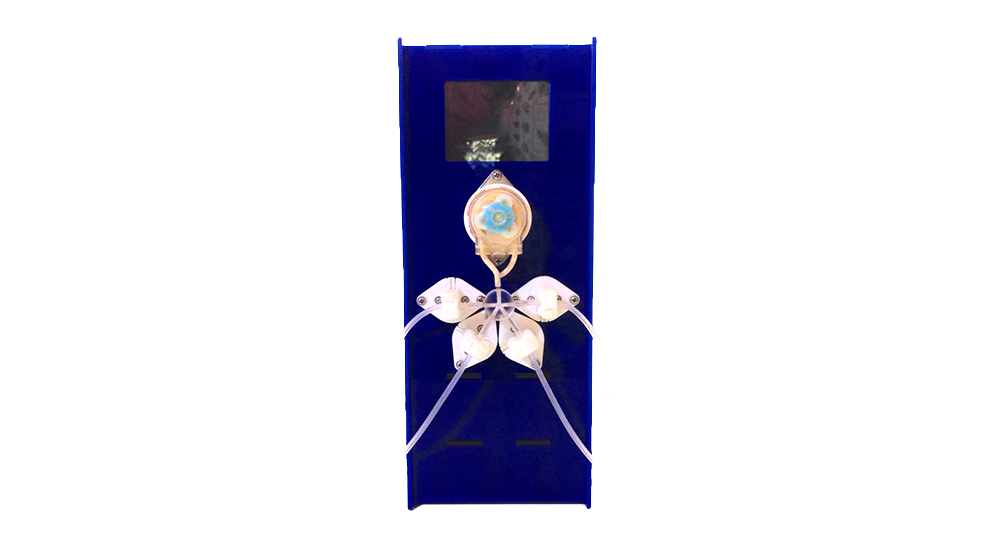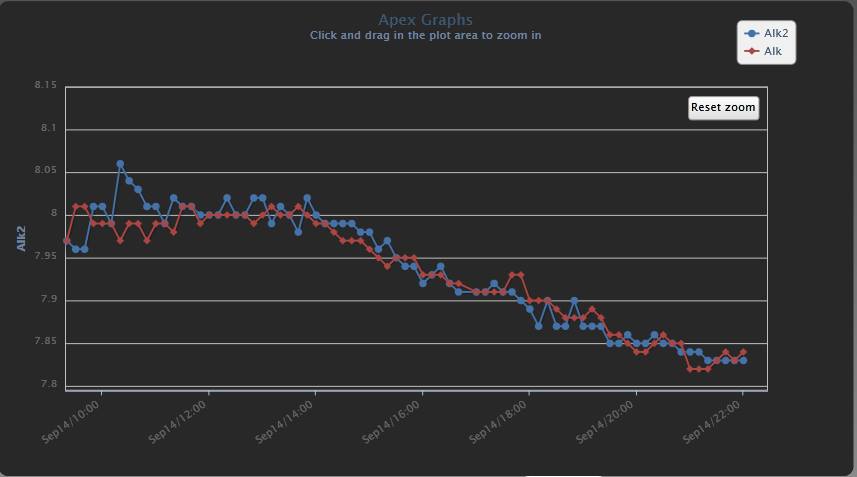
This prototype Alkalinity Monitor, invented and built by Jim Welsh, introduced at MACNA 2016, has many aquarists dizzy with anticipation. Image courtesy Jim Welsh
You may recall Jim Welsh as a past CORAL Magazine contributor; as an aquarist, he’s an all-in type of guy who looks for ways to break new ground and push forward the art and science of aquarium-keeping. This leads to things like his first successful breeding of the Hawaiian Flame Pipefish (as reported in CORAL, March/April 2014) and another breakthrough with perhaps significantly broader appeal and impact.
It’s been incredibly interesting to watch Jim Welsh somewhat quietly developing a brand new piece of patent-pending technology that has the potential to change how we control and maintain our reef aquariums. Welsh arrived at MACNA with his working prototype of his Alkalinity Monitor, a device that automatically performs alkalinity tests and then reports the resultant data to your aquarium controller through a BNC connection (basically, it would connect to a pH probe input port).
Simply being able to routinely and automatically test alkalinity is remarkable in itself, but with an accuracy of +/- 0.05 DKH, this device presents a level of precision not available with your typical alkalinity test. The invention of this Alkalinity Monitor creates an avenue for aquarium controllers to have the ability to monitor and control alkalinity in an automated fashion. Understanding the critical role of alkalinity in a reef aquarium, and knowing how quickly corals can suffer when alkalinity goes out of whack, it is perhaps not hyperbole to call this device “game-changing,” as many have already done. Locking down alkalinity maintenance in this fashion could lead to a new level of alkalinity stability in a reef aquarium, as well as providing another parameter that can be monitored, with warnings sent at the first sign of a problem.

This APEX plotting of alkalinity shows the measurements coming in from two prototype units running on the same sample. Note the DKH range of the plots. “After the long trip home, both of my MACNA prototypes still agree quite nicely!” – Jim Welsh
Considering that this device is still a patent-pending prototype, nothing is set in stone, and the sky is the limit. To discuss things such as pricing or availability timelines is clearly premature. To discuss exactly how you’d use this device is also perhaps premature (as Welsh states, “I’m not going to tell someone how to run their tank”), but for aquarists already familiar with the use of modern aquarium controllers, it shouldn’t take much imagination to realize the potential value and power this device represents.
Check out a great first look at Jim Welsh’s Alkalinity Monitor as he discusses it with Marc Levenson of Melev’s Reef at MACNA 2016 in San Diego, California, last week! There’s a lot more info inside, so watch now!





Trackbacks/Pingbacks